as we know tree structure could be represented in S-expressions. For example

(5 (4 (11 (7 () ()) (2 () ()) ) ()) (8 (13 () ()) (4 () (1 () ()) ) ) )
But is it possible to use S-expression for a graph (esp. DAG)? e.g.

My second question is what is topology limit of S-expression can represent?
I Googled this quesion and couldn't find a clue, without a formal CS background, I am having trouble figuring this out myself. Please don't close this question. Thanks in advance!